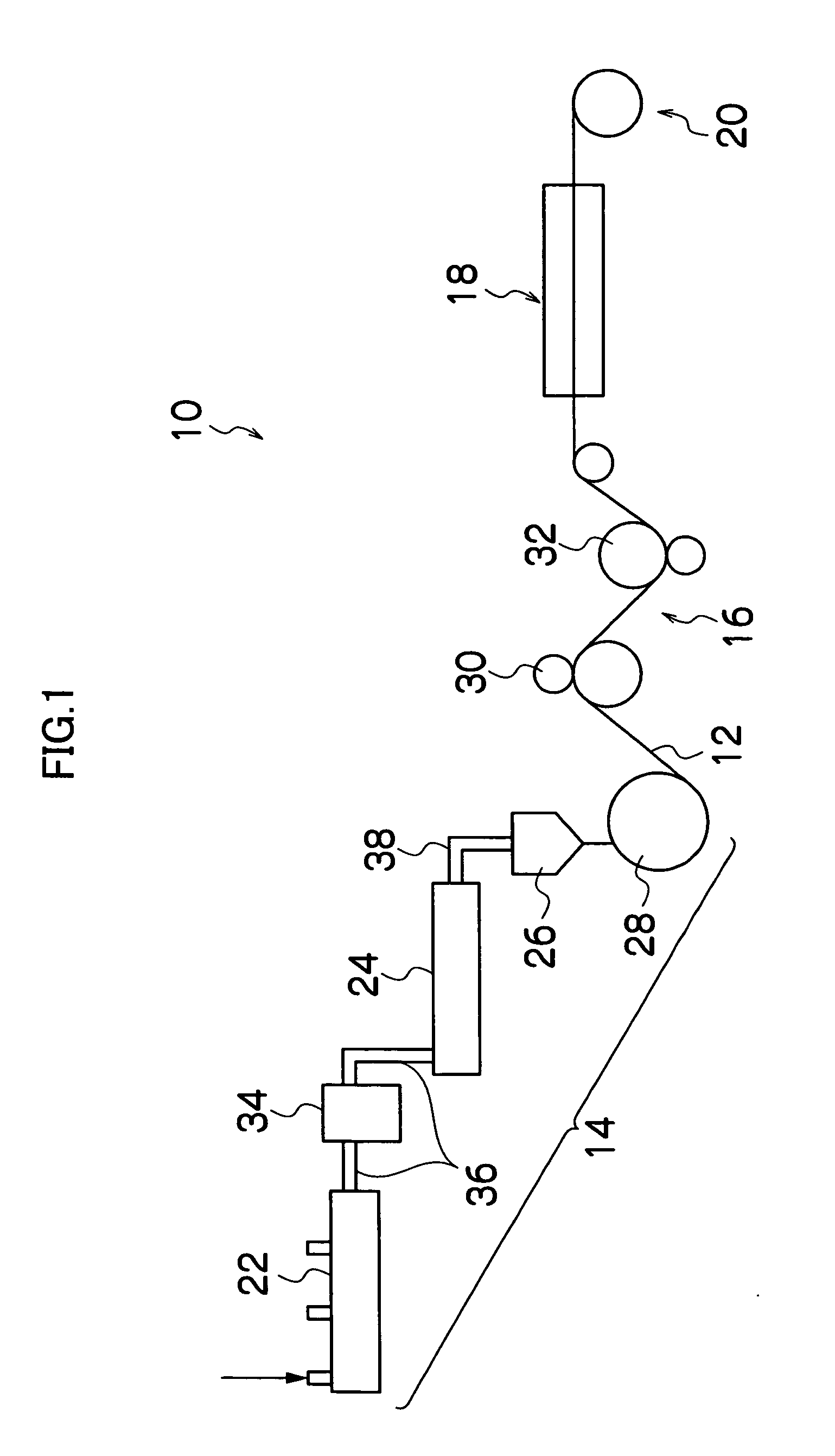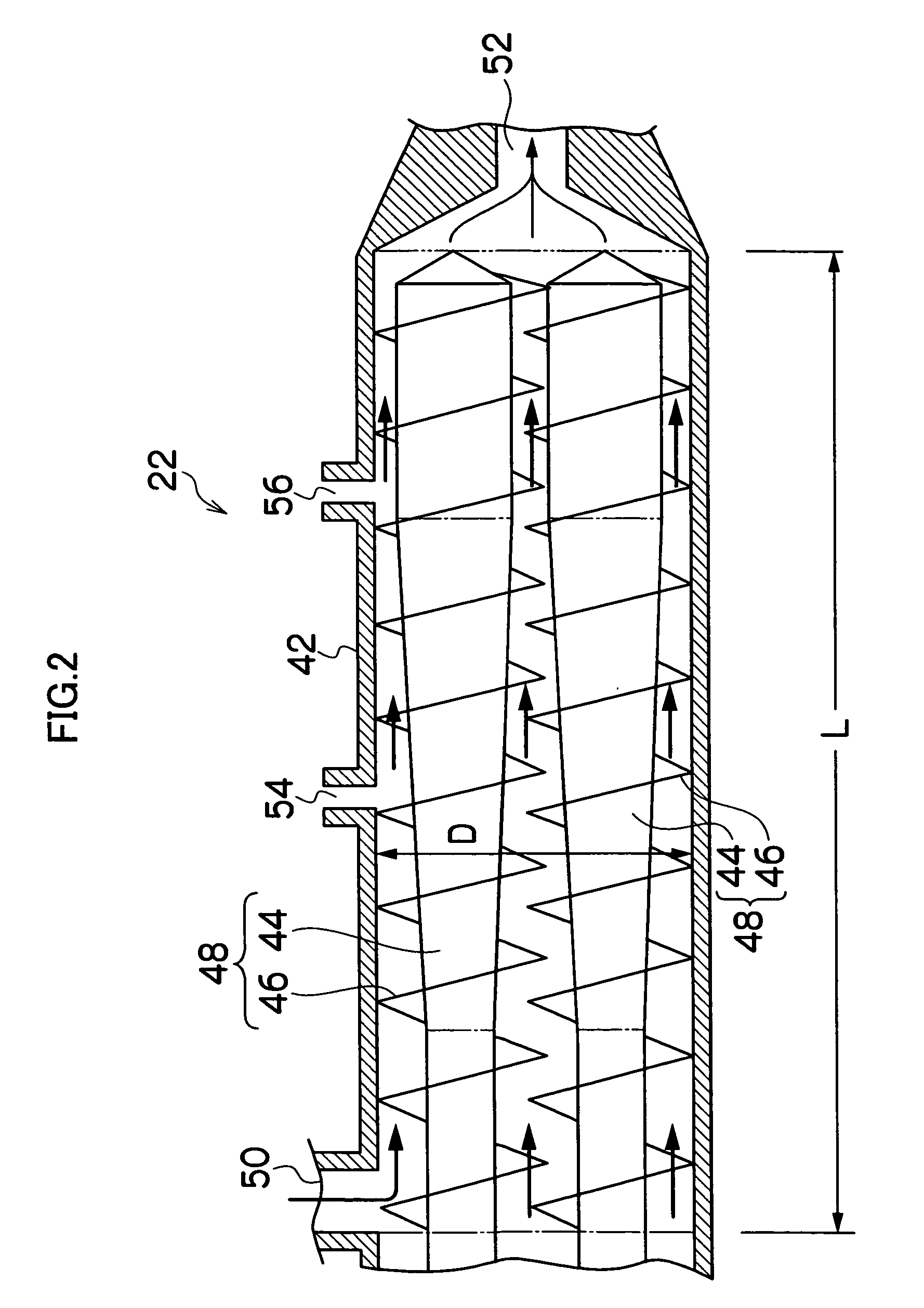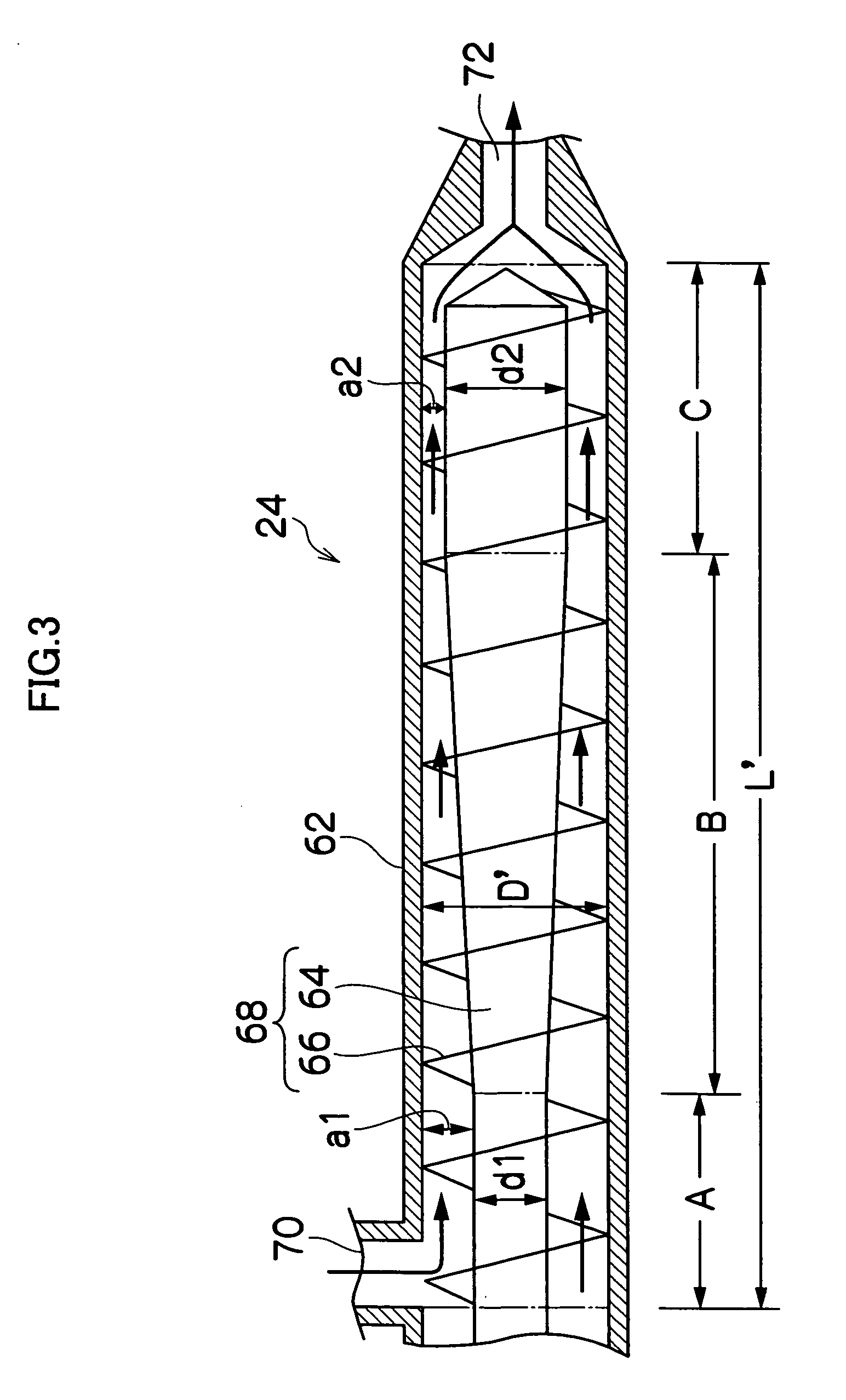Cellulose acylate resin film and method for producing the same
a technology cellulose acylate, which is applied in the direction of cellulosic plastic layered products, instruments, other domestic objects, etc., can solve the problems of insufficient molten resin, resin decoloration, and deformation of cellulose acylate resin, so as to achieve stable discharge pressure to the die, high quality, and high functional
- Summary
- Abstract
- Description
- Claims
- Application Information
AI Technical Summary
Benefits of technology
Problems solved by technology
Method used
Image
Examples
synthesis example 1
Synthesis of Cellulose Acetate Propionate
[0134] 150 g of cellulose (broadleaf pulp) and 75 g of acetic acid were taken into a 5 L separable flask equipped with a reflux unit, as a reactor, and vigorously stirred for 2 hours while heated in an oil bath whose temperature is adjusted to 60° C. The cellulose thus pretreated was swelled and crushed and in the form of fluff. The reactor was then placed in an iced water bath at 2° C. for 30 minutes so that the cellulose was cooled.
[0135] Separately, a mixture of 1545 g of propionic anhydride, as an acylating agent, and 10.5 g of sulfuric acid was prepared, and the mixture was cooled to −30° C. and added, at one time, to the reactor containing the above described pretreated cellulose. After 30 minutes had elapsed, the internal temperature of the reactor was controlled, by increasing the temperature outside the reactor gradually, so that it reached 25° C. two hours after the addition of the acylating agent. The reactor was then cooled in a...
synthesis example 2
Synthesis of Cellulose Acetate Butyrate
[0137] 100 g of cellulose (broadleaf pulp) and 135 g of acetic acid were taken into a 5 L separable flask equipped with a reflux unit, as a reactor, and allowed to stand for 1 hour while heated in an oil bath whose temperature is adjusted to 60° C. Then the mixture was stirred vigorously for 1 hour while heated in an oil bath whose temperature is adjusted to 60° C. The cellulose thus pretreated was swelled and crushed and in the form of fluff. The reactor was then placed in an iced water bath at 5° C. for 1 hour so that the cellulose was fully cooled.
[0138] Separately, a mixture of 1080 g of butyric anhydride, as an acylating agent, and 10.0 g of sulfuric acid was prepared, and the mixture was cooled to −20° C. and added, at one time, to the reactor containing the above described pretreated cellulose. After 30 minutes had elapsed, the mixture was allowed to react for 5 hours by increasing the temperature outside the reactor to 20° C. The reac...
examples
1. Formation of Cellulose Acylate Film
(1) Preparation of Cellulose Acylate
[0355] The cellulose acylates of Examples 1 to 13 and Comparative Examples 1 to 2 shown in Table 1 of FIG. 5 were obtained by adding to cellulose sulfuric acid (7.8 parts by weight to 100 parts of cellulose) as a catalyst, and a carboxylic acid, as a raw material for an acyl substituent, to allowing them to acylation reaction at 40° C. In this acylation, the kind and degree of an acyl substituent were adjusted by adjusting the kind and amount of the carboxylic acid used. Further, after the acylation, aging was performed at 40° C. to prepare samples with different degrees of polymerization (the longer the aging time, the lower the degree of polymerization). The degree of polymerization of each of the cellulose acylates thus produced was obtained the following method.
(Method of Determining Degree of Polymerization)
[0356] About 0.2 g of absolutely dried cellulose acylate was weighed and dissolved in 100 ml...
PUM
| Property | Measurement | Unit |
|---|---|---|
| temperature | aaaaa | aaaaa |
| temperature | aaaaa | aaaaa |
| temperature | aaaaa | aaaaa |
Abstract
Description
Claims
Application Information
 Login to view more
Login to view more - R&D Engineer
- R&D Manager
- IP Professional
- Industry Leading Data Capabilities
- Powerful AI technology
- Patent DNA Extraction
Browse by: Latest US Patents, China's latest patents, Technical Efficacy Thesaurus, Application Domain, Technology Topic.
© 2024 PatSnap. All rights reserved.Legal|Privacy policy|Modern Slavery Act Transparency Statement|Sitemap



